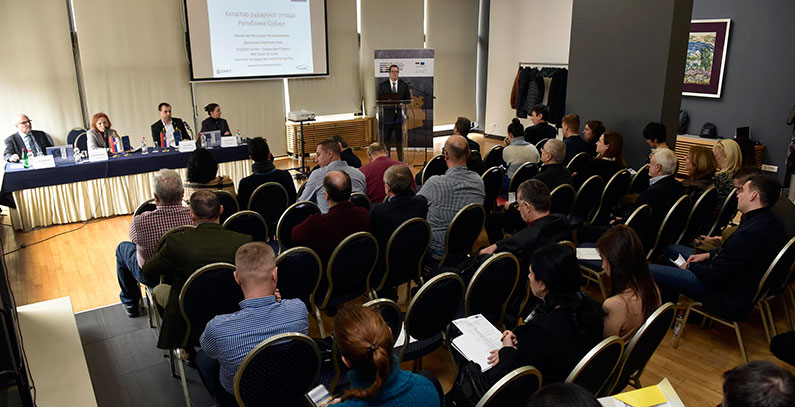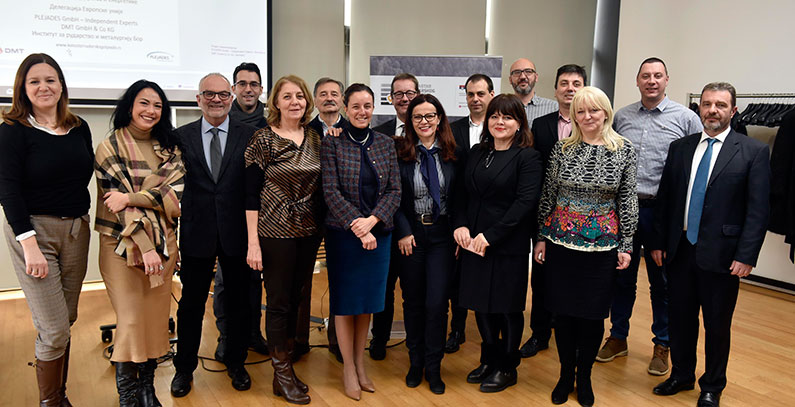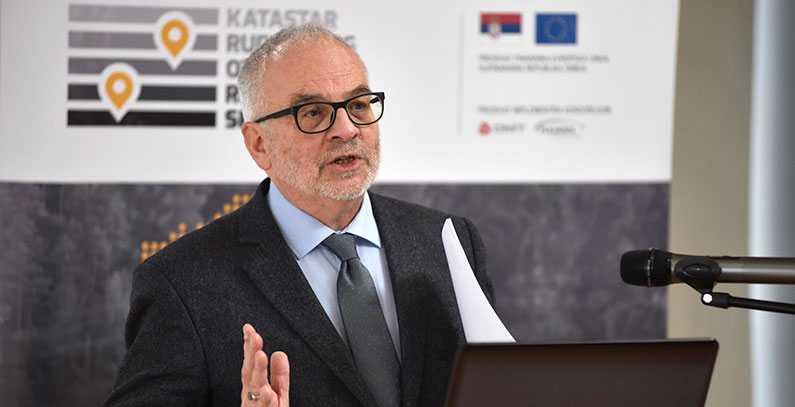
Photo: Final conference of the project held in Belgrade (BGEN)
Serbia got its Cadastre of Mining Waste in an eponymous project implemented by the Ministry of Mining and Energy with the European Union’s financial support. The project worth EUR 2.1 million, which lasted from February 2017 to January 2020, has contributed to the further development and improvement of the system for responsible and sustainable mining waste management in Serbia, according to the speakers at the final conference of the project held today in Belgrade.
Representatives of the ministry, the Delegation of the European Union to the Republic of Serbia and members of the project team led by a consortium of German companies Plejades and DMT presented the project results, methodology and importance for the mining sector and its environmental impact.
The book and web application of the Cadastre of Mining Waste include systemic information from 250 sites with abandoned or closed mines.
The end result of case studies is the estimation of investments in the remediation and rehabilitation of three mining waste facilities
The cadastre also contains the data of the detailed investigations for 41 locations with chemical, mineralogical, geomechanical, and laboratory tests, and with the categorization of mining waste and waste dumps and an assessment of the environmental and impact on human health.
Also, case studies were conducted for three sites with different typical characteristics. The end result is the assessment of investments in the remediation of such places.
The implementation of the decree on mining waste management started in 2020

The results will help the ministry to analyze the possibilities for rehabilitation, remediation and recultivation of mining waste facilities that are critical with regard to pollution or risk for human health, said Dragana Jelisavac Erdeljan, head of the Mining Department at the ministry.
She also said that the implementation of the decree on mining waste management started in 2020.
The companies have the opportunity to adjust their operations with the decree within a period of two years.
The experience gained during the project will help in the implementation of the decree, she said.
The EU provided 90% of the funding for the project

Jelena Simović, Assistant Minister of Mining and Energy, said that 90% of the funding for the project was provided by the EU and the rest by Serbia.
The ministry is implementing 13 environmental projects with EU financial support
She stated it is one of 13 environmental projects successfully implemented by the ministry with EU financial support.
Peter Bayer, the team leader of the Cadastre of Mining Waste project, said the major challenges were the large number of mining sites that needed to be visited and explored and the broad volume of data that had to be processed, documented in the form of comprehensible reports and maps, and fed into a web application developed during the project.
Over 40 domestic and foreign experts were included in the project
Although this technically and operationally demanding project needed to be completed in a relatively short period, a team of more than 40 domestic and foreign experts succeeded in this endeavor, said Bayer, a mining expert from Germany’s Plejades International Experts.
Citizens living near waste sites will be the direct beneficiaries of the project

Boris Ilijevski, Project Manager, Local Infrastructure and Energy, the EU Delegation to Serbia, said that through the Cadastre of Mining Waste project the EU is helping Serbia to develop an inventory of about 500 mining waste sites.
This information will serve the ministry and local municipalities as a starting point for planning risk mitigation activities, mining waste management or the continued use of this waste by mining companies, he said.
The EU has donated EUR 402 million to Serbia for the environment
Ilievski said that local communities and citizens who live near these sites would be the direct beneficiaries of the project, adding that over the past 19 years, the EU has donated EUR 402 million to Serbia for the environment.
The importance of the Cadastre of Mining Waste project was presented also at public events in Raška in 2018 and in Bor last year, while activities were shown on the project’s official website.


















Be the first one to comment on this article.